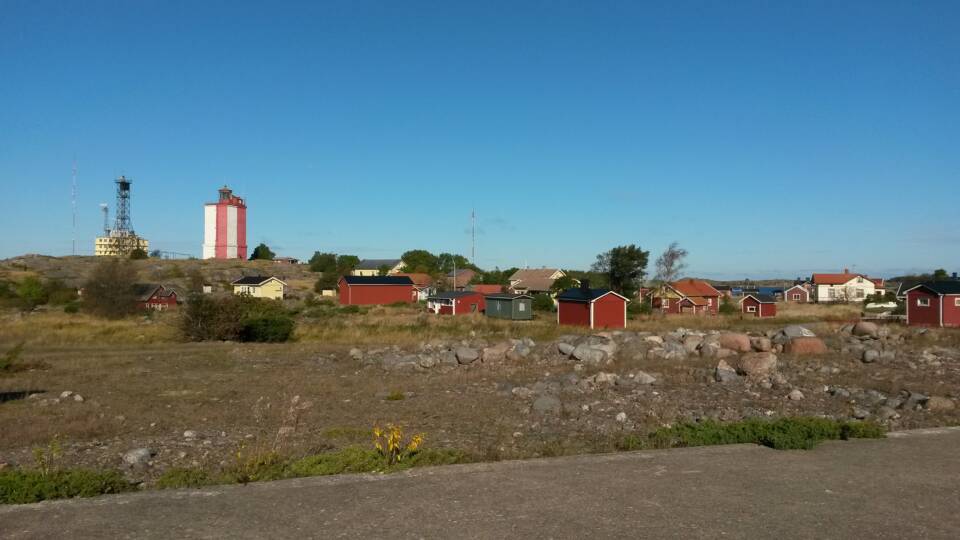

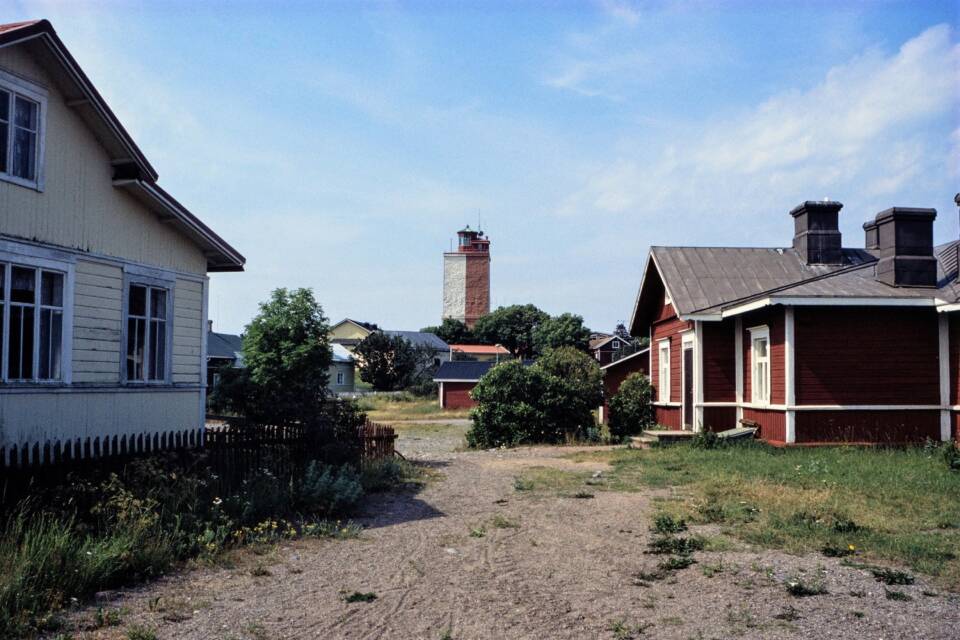
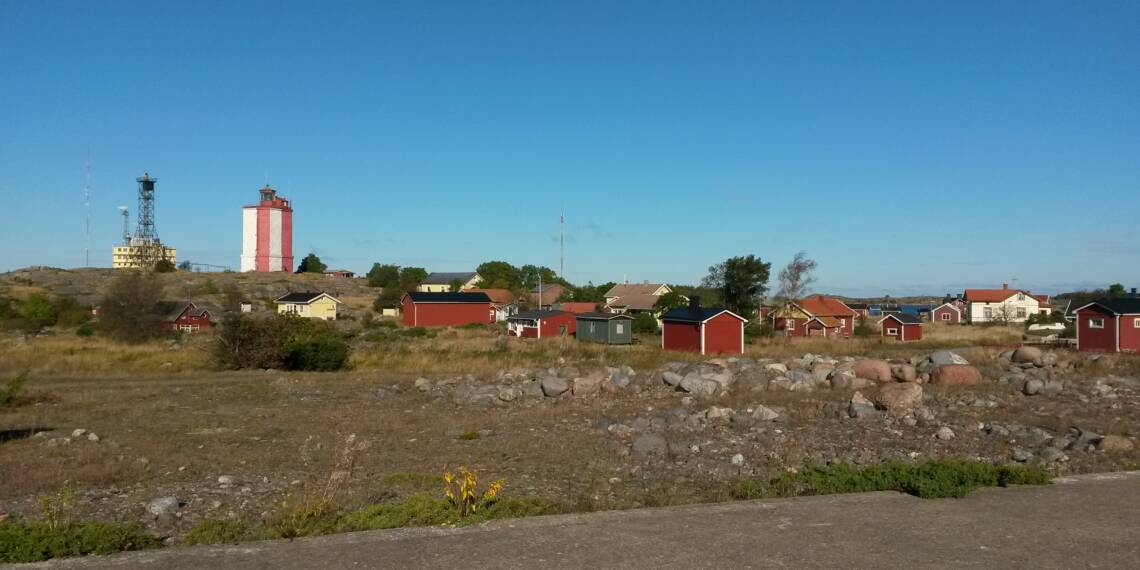
The first lighthouse in Finland was built in 1753 on the outer archipelago island of Utö. However, it was almost completely destroyed during the Finnish War (1808-1809). A new lighthouse was built on the same site, which still stands on the island to this day.
The island of Utö has an important position in the outer archipelago, along the sea route to the Archipelago Sea. The island was already known as a major landmark in the Middle Ages. There has been piloting activities on Utö since the 16th century at least. Signal fires were burned on the island, whose purpose was to guide mariners.
During the 18th century, permanently-employed pilots’ positions were established on Utö and the island’s piloting community was founded. Over time, a small and dense archipelago village grew around the pilots’ living quarters. The present pilot station was built in 1958.
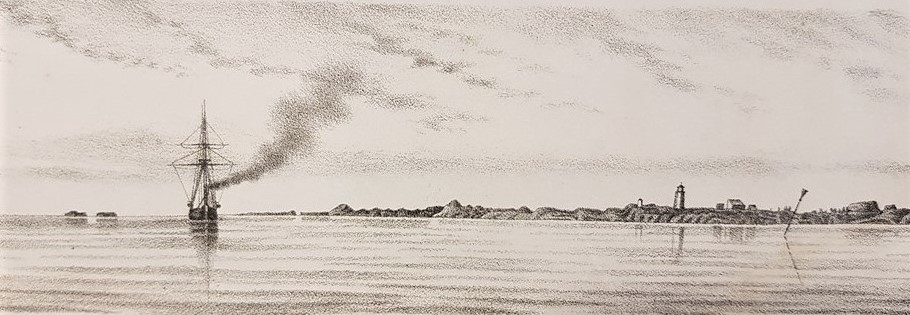
In 1753, the lightless wooden daymark beacon was replaced by Finland’s first ever lighthouse. According to the construction drawings for the lighthouse, the tower was supposed to be slender and round with a wood-built section for the lamp. However due to the masons’ initiative, the finished lighthouse did not match the drawings at all.
Instead, the tower was built in a conical shape and was rough in appearance. At the top of the lighthouse, at the end of an iron pole, was a basket in which a signal fire could be burnt when needed. The Lyökki Daymark near Uusikaupunki is a good example of what the first lighthouse in Utö looked like.
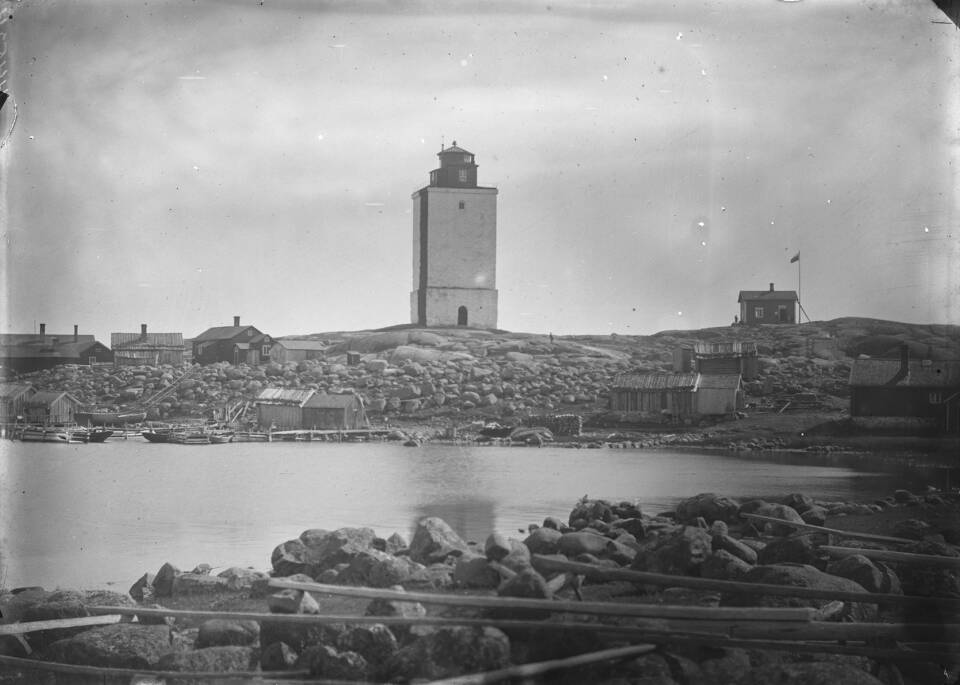
During the turmoil of the Finnish War between 1808 and 1809, the first lighthouse was almost destroyed. In 1814, a new granite-stone lighthouse was built to replace it, which still dominates the island landscape to this day.
In 1841, Finland’s first lighthouse church was built inside the spacious, rectangular lighthouse tower. The lighthouse was converted to electricity in 1935. The light carries 17.8 nautical miles or about 33 kilometres out to sea.

The island of Utö has also served in Finland’s defence. The island was fortified in the 1910s to protect the sea route to St. Petersburg, forming part of the so-called marine fortress chain of Peter the Great.
A paved road and artillery emplacements were built on the island, which served as a support base for the Russian Navy. The Russians also built a barracks, a wash house, an ammunition depot, and even a railway for moving heavy loads across the island.
After Finland’s independence, the Finnish Defence Forces took control of the island. The buildings associated with garrison operations from various decades are mainly located on the northern part of the island.
At the turn of the year 2005-2006, the Utö garrison was decommissioned and the building stock was transferred from state ownership. However, part of the island is still a closed military area where movement is restricted for security reasons.


Located at the edge of the open seas, the nature on Utö Island is rugged. Today it is the southernmost inhabited island in the Finnish archipelago.
Although Utö is best known for its lighthouse, there is much more to see on the island. Its long history has left behind various historical structures and ancient remnants, rock engravings and wartime-remains.
The original well-preserved lighthouse building is unique. Its specialty is the lighthouse church, which has been preserved unaltered. At the foot of the lighthouse tower is the island’s oldest preserved building, i.e. the lighthouse keepers’ dwelling house completed in 1753, which houses a museum presenting the island’s history.
The are many shipwrecks in the waters surrounding the island. Learn more about them from the cultural environment service window webpage www.kyppi.fi(siirryt toiseen palveluun).



The waters surrounding the island of Utö have always been prone to shipwrecks, earning the area the nickname “the graveyard of ships.” Despite the guidance of the lighthouse and local pilots, many vessels fell victim to violent weather and sank. Major maritime disasters occurred even in the 20th century. One of the most well-known was the wreck of the Park Victory in 1947.
Park Victory was carrying a cargo of coal to Finland. As the ship approached Utö, a snowstorm began to intensify. The captain requested a pilot from the island. They anchored near the islet of Lillharun. As evening fell, the wind picked up, and during the night, massive waves tore the ship from its anchor and smashed it onto the rocks. Although it briefly broke free, just a few hours later it struck the seabed with such force that water began flooding in. The crew launched lifeboats.
The residents of Utö were celebrating Christmas when news of the shipwreck reached the village. Everyone rushed to help, but in the darkness and stormy seas, nothing could be seen or heard. Soon, they spotted flares fired by the Park Victory crew and headed in that direction. At dawn, around twenty freezing men were rescued from nearby rocks and a lifeboat. Ten crew members were lost to the winter storm. Park Victory sank to a depth of 30 metres, where it remained forgotten for decades.
Original source: Jouko Moisala, “The Story of S/S Park Victory,” 2017
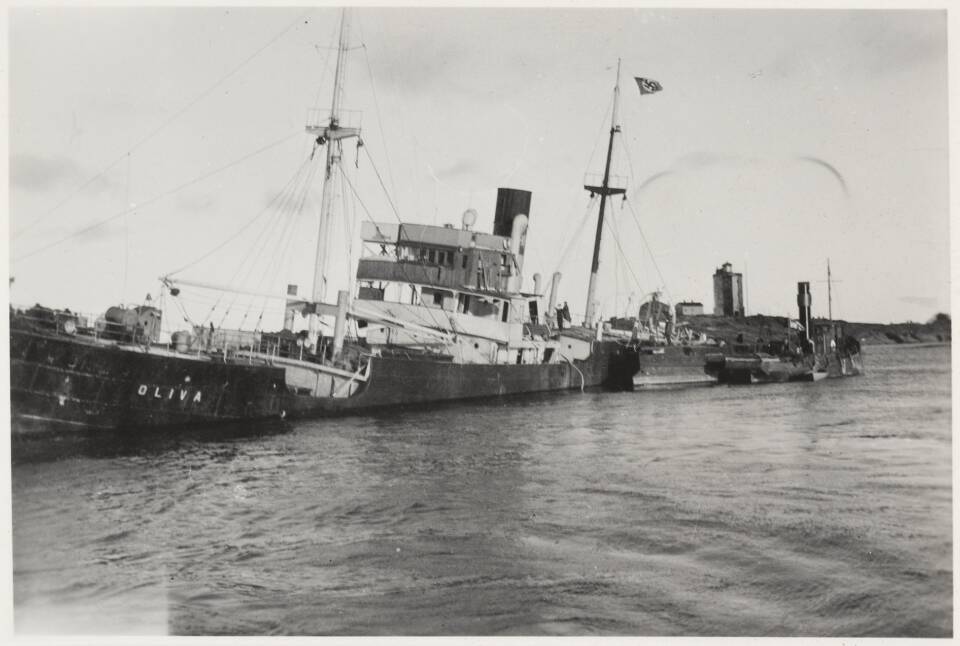
The island of Utö is Finland’s oldest known maritime benchmark.
The Finnish Heritage Agency has defined the island as a nationally significant built cultural environment due to its diverse and layered history, as well as its preserved village complex. Utö’s unique lighthouse church is protected by the Church Act(siirryt toiseen palveluun).
Read more about this location in the Finnish Heritage Agency’s register(siirryt toiseen palveluun)!
A small part of Utö Island lies within the Archipelago National Park.
The island of Utö can be easily reached by ferry, which leaves from Pärnäinen Harbour in Nauvo. The journey takes about 4 hours. Check the routes and ferry timetables here(siirryt toiseen palveluun).
There is also organised transportation leaving from Turku to the island of Utö during the summer months. A taxi boat can be hired to reach Utö and visitors can also get there by private boat.
There is accommodation and a restaurant on the island. More information on visiting and accommodation can be found from the lighthouse website(siirryt toiseen palveluun).
Finnish Heritage Agency’s mapservice
P: 6640449, I: 184078(siirryt toiseen palveluun) (ETRS-TM35FIN)